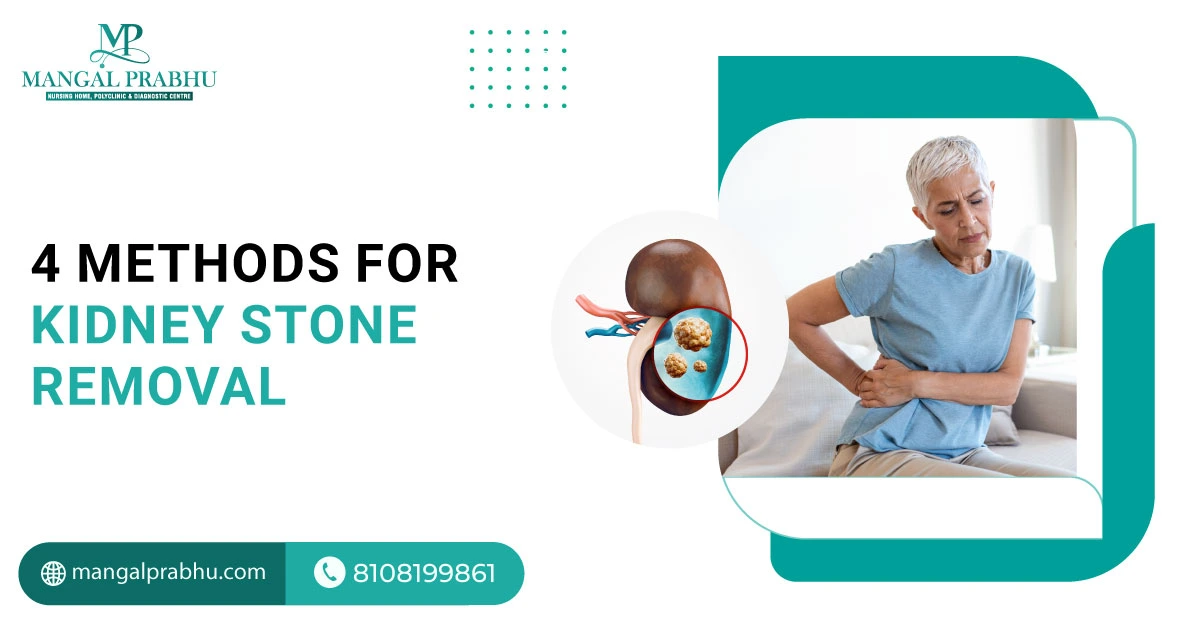
4 Methods for Kidney Stone Removal
Kidney stones can be super painful. While some are small enough to pass naturally through urine, others might get stuck in the ureters and cause immense pain. Fortunately, the urology hospital in Navi Mumbai is equipped with the technology to remove these stones easily. In this post, we’ve discussed the four methods for kidney stone removal. Here’s a look:
Method 1: Extracorporeal Shock Wave Lithotripsy (ESWL)
The doctor for kidney stones in Navi Mumbai will try all non-invasive medical options before considering a surgical intervention. Medication is usually the first line of treatment for kidney stones that are 5 mm or smaller. Alpha-blockers and pain relief medication support the quick and natural removal of the kidney stones.
While one relaxes your ureter’s muscles, the other helps manage pain. That said, the method may not work for every patient, particularly if you have larger stones. Drinking adequate water is also important to flush out kidney stones.
Method 2: Medication and Natural Remedies
This non-invasive method may sound pretty complicated, but it doesn’t involve any cuts or surgical intervention. The doctor uses machines that produce sound waves and target them at the stone location. These sound waves break the stones into smaller, multiple pieces, making them easier to expel through urine.
The procedure involves anesthesia to ensure the patient’s comfort. It lasts 45-60 minutes, and the patient can usually go home the same day. Multiple sessions of Extracorporeal Shock Wave Lithotripsy may be needed, depending on the size, location, and number of stones.
Method 3: Ureteroscopy
It’s another alternative to an open surgery for kidney stone removal. It’s a minimally invasive method to remove kidney stones. Ureteroscopy is performed under anesthesia. The doctor inserts the tool into your urinary tract and guides it to the location of the stone.
Depending on the stone’s size, ureteroscopy can either break kidney stones into multiple pieces or remove them at once. Recovery is quick, and patients can get back to their normal life shortly after ureteroscopy, although the stent might be placed to support urine flow and smooth healing.
Method 4: Percutaneous Nephrolithotomy (PCNL)
Percutaneous Nephrolithotomy (PCNL) is often the last resort for kidney stone removal. It’s an invasive surgical procedure that involves an incision in the back to access your kidneys. With the help of specialized instruments, the doctor breaks the stones for quick removal. The surgery is usually reserved for patients with large kidney stones that are 2 cm or larger.
Although the procedure is comparatively more complex than other kidney stone removal options, it has a higher success rate. The recovery may take a few weeks. You may also have to stay in the hospital for a day or two.
Conclusion
With multiple methods available for removing kidney stones, it can be overwhelming to choose the most appropriate one. It’s best to consult a urologist to know which kidney stone removal method is your best option. Your doctor will evaluate the stone’s size and location to determine which method is the best fit for your case.
